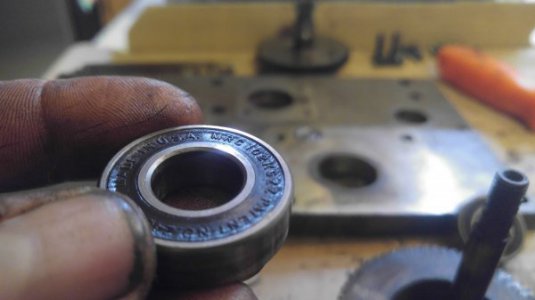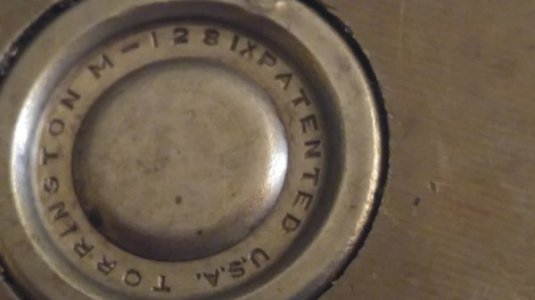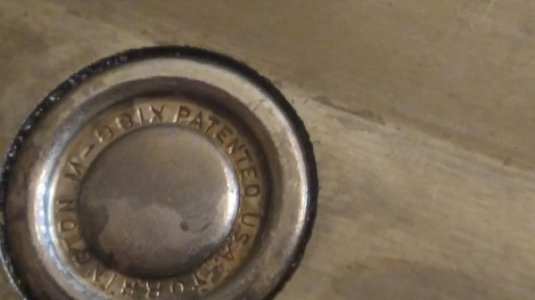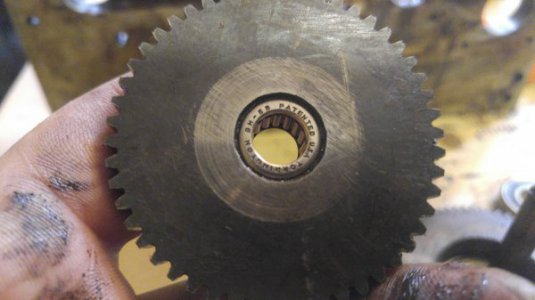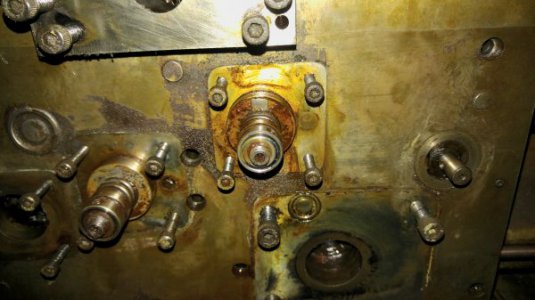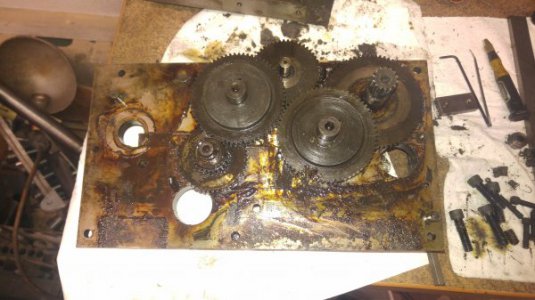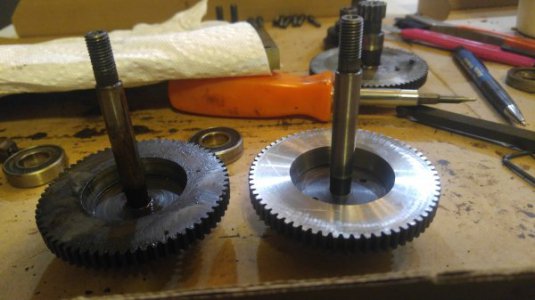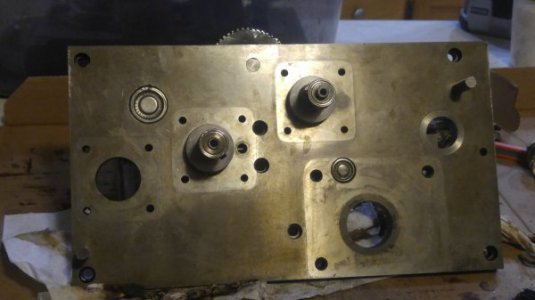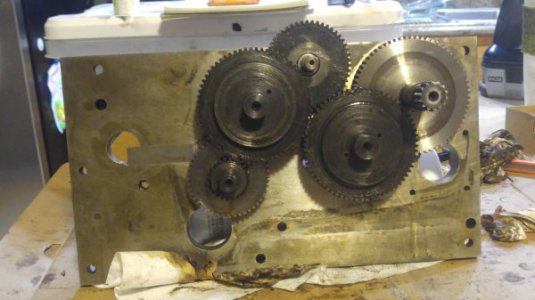Some more news: started working on the internal apron assembly and jotting down notes of bearings and making sure things are proper.
However,
1) The clutch caged thrust bearings are a pain in the tuckus
2) One of the clutch handle springs is wonked, so I'll have to remake / replace that.
3) The interlock lever pin is busted, so I'll have to remake the pin.
Anyway, bearings:
(Qty 1: $5.01 ea @ Amazon - Koyo): Torrington B-88 (Power feed gear cluster seat bearing)
(Qty 2: $10.84 ea @ Amazon - Koyo GB-108?): Torrington B-108 (Long. and Cross clutch gear seat bearings)
(Qty 1: $7.12 ea @ Amazon - Koyo): Torrington B-128 (Carriage gear seat bearing)
In retrospect, and since everything is apart, I really need to take proper ID, OD and depth measurements, as opposed to just locating the proper Torrington part number and hoping that the Koyo (or whoever) equivalents will work. I imagine they will, but I can't definitively say that.
Anywho, some more bearing pictures:
Caged clutch thrust bearings
(these little dudes are causing me no end of grief, mostly because the cages are shot, and don't hold the balls properly. Anyone know how to specify a cage? I imagine it's by # of balls and diameter of balls and OD of cage, but...)
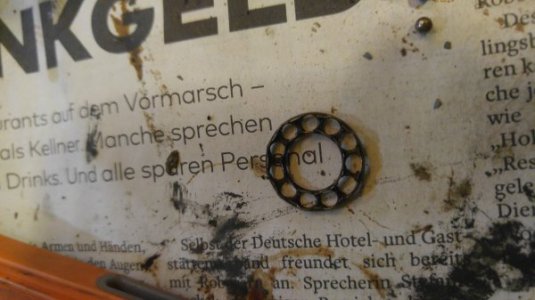
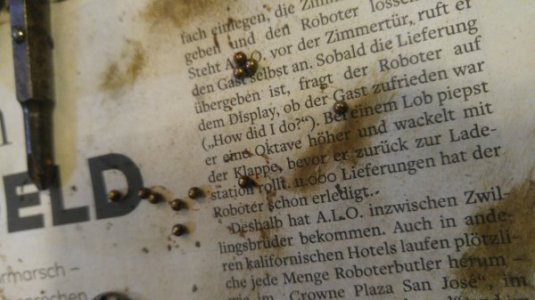
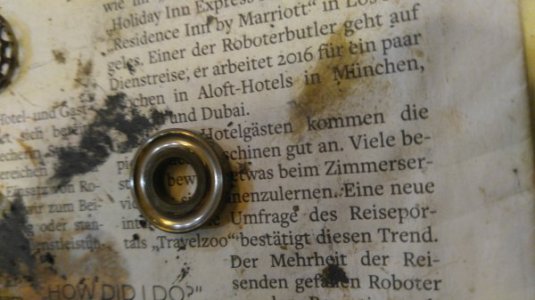
Inner Apron Bearing pictures:
Power Feed shaft bearing:
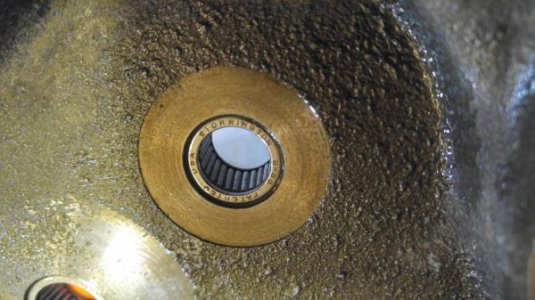
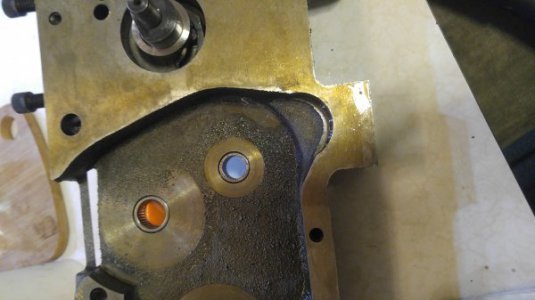
Clutch shaft inner bearing:
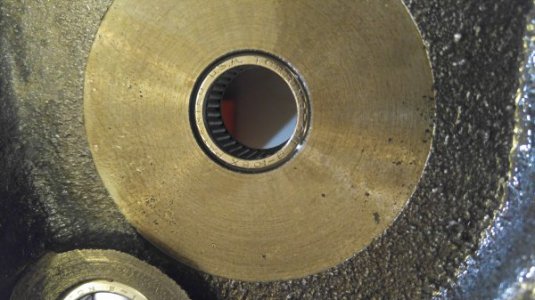
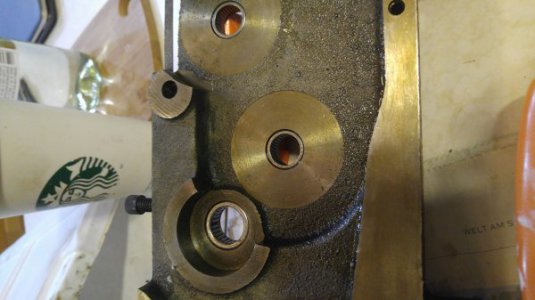
Carriage gear inner bearing:
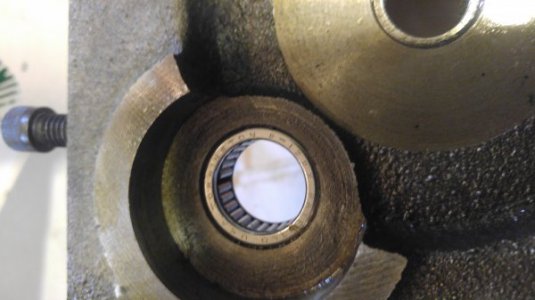

Of course, all these photos are rotated because I didn't hold my phone properly, and there's no rotation feature in this forum software - sorry about that, I'll try to be more diligent in the future.
I'm going to polish everything this evening, and I'll do another round of photos after that again - except it won't be assembled for the remake of the broken / mashed up pieces I have to take care of first.
Question: what lubrication should I be using within the apron, and how much (ounces, pint, etc.) should I use? I see in the later HLV-H manuals that I should be using ATF up to the sight glass, but I have neither a sight glass, nor drain plug and all that jazz, so I'm rather mystified - any help on that front?
Regards,
Mike
